Tokyo Meiji-era Station Bustles with Life Once More; Former Station Remodeled into Commercial Facility, Observation Deck to Watch Passing Trains Up Close
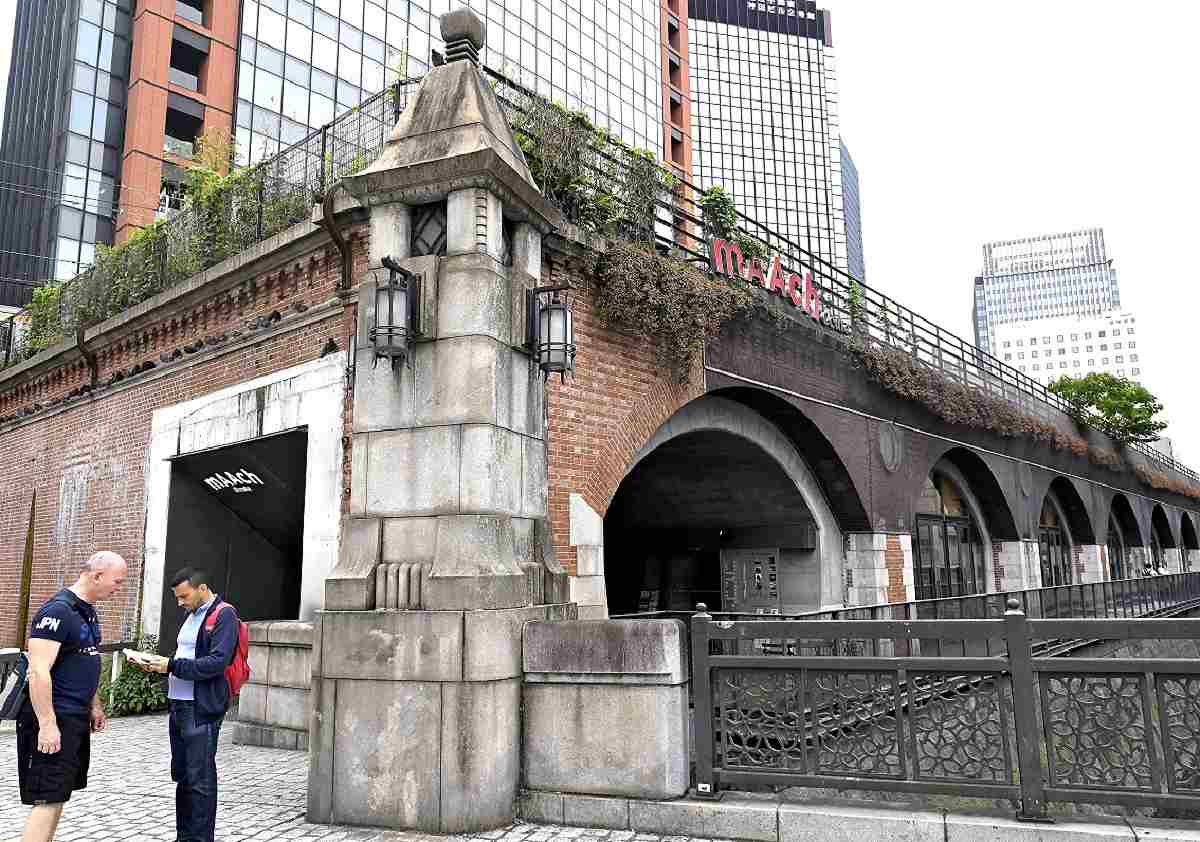
Railway tracks sit atop a facility lined with red-brick walls along the Kanda River.
15:07 JST, July 23, 2024
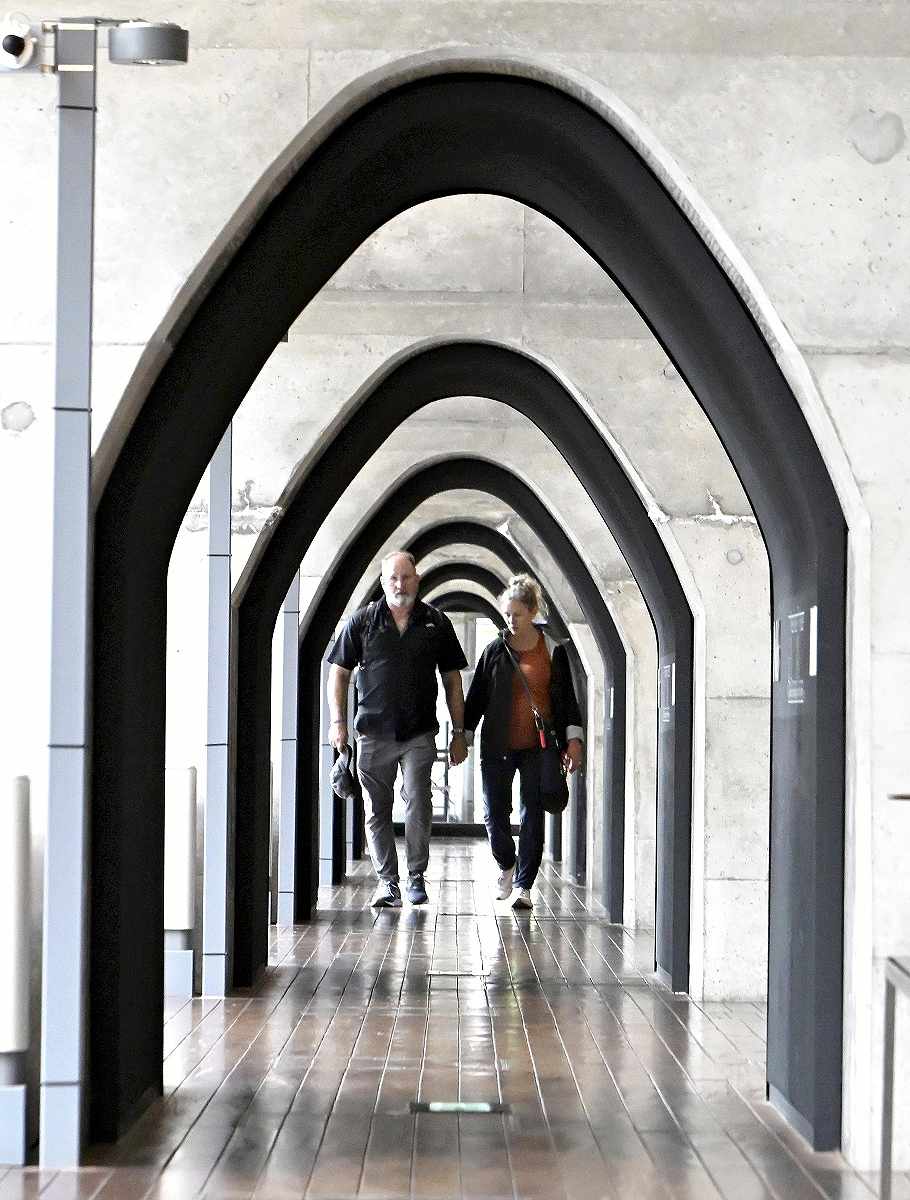
A view of the arch-shaped passageway
The past collides with the present when visiting Old Manseibashi Station, which was used as a rail terminal from the Meiji era until 1943 and is now the commercial facility mAAch ecute Kanda Manseibashi. Red-brick walls hold up the JR Chuo Line tracks, with cafes and stores lined underneath.
Visitors can soak in both nostalgia and novelty as they walk around the platforms and staircases of the former station, located near Manseibashi Bridge in Kanda. The central Tokyo area has many secondhand bookstores and long-established restaurants.
Unique to the facility is the observation deck that extends along the second floor and was remodeled from one of the train’s old platforms. The deck is located at the same height as the elevated railway line.
It is thrilling to see trains approach with a roar and run alongside the deck. The railway track is only about one meter away, making me realize that this is where passengers used to get off and on the train.
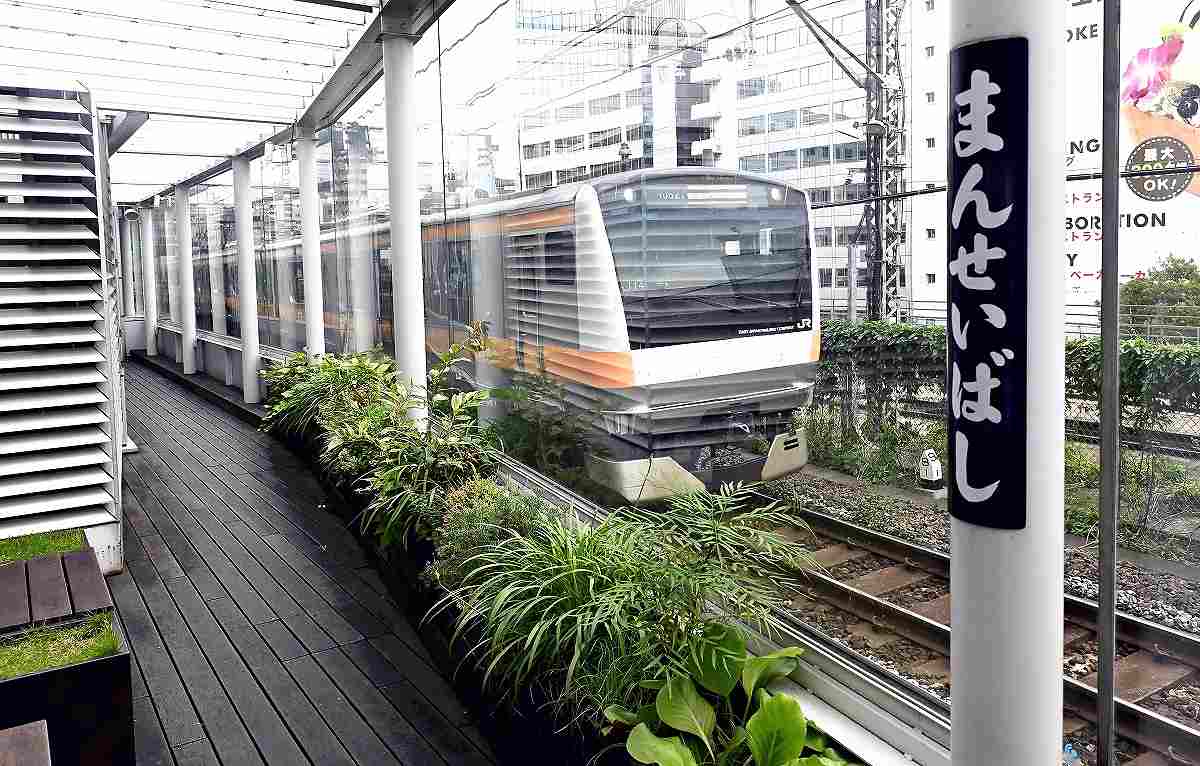
The observation deck has been remodeled from the former station’s platform.
“There are few facilities where people can see trains running this close, so it is very popular among railroad fans,” said an official from the facility’s operating company.
Manseibashi Station opened in 1912 as the terminal station of the Chuo Line. Major roads and streetcar lines came together at the station, reportedly leading the surrounding area to develop into a busy shopping district on par with Ginza.
However, the number of passengers using the station declined, partly because the Chuo Line was extended to Tokyo Station. The station was closed in 1943 so its personnel and materials could be used for the war. The structure was restored as a commercial facility in 2013 to bring the liveliness of the past back to the area. The staircase from when the station first opened is still in use, and the blackened floor and cracked walls remind us of the passage of time.
Built in the space under the elevated railway tracks, the first floor has about 20 rooms for restaurants and exhibition halls. Originally, it was meant to house a guardroom and a night duty room for station employees. Concrete walls divide the stores and have doorways resembling the shape of crayon tips that together form a passageway; they create a pleasant feeling as if passing through a series of tunnels.
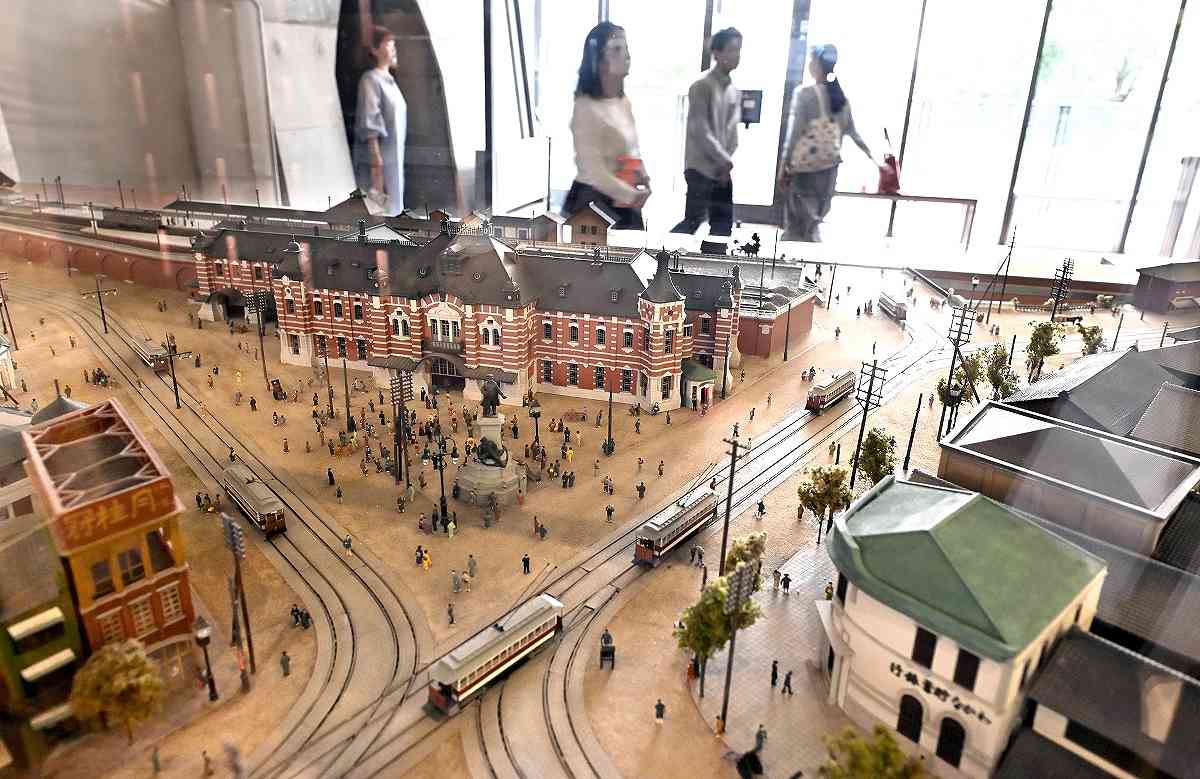
A diorama reproduces the liveliness around Manseibashi Bridge in the past.
A diorama of Manseibashi Station from the Meiji and Taisho eras is displayed at the end of the passageway. The diorama’s landscape includes buildings such as a liquor store and a bank, and the crowds gathering around the station convey the excitement of the time.
Everyone spent their time as they pleased on the terrace along the Kanda River. I saw foreign visitors with drinks in their hands and parents and children on a sightseeing trip. People seem to be drawn to this place even though the trains no longer stop here.
***
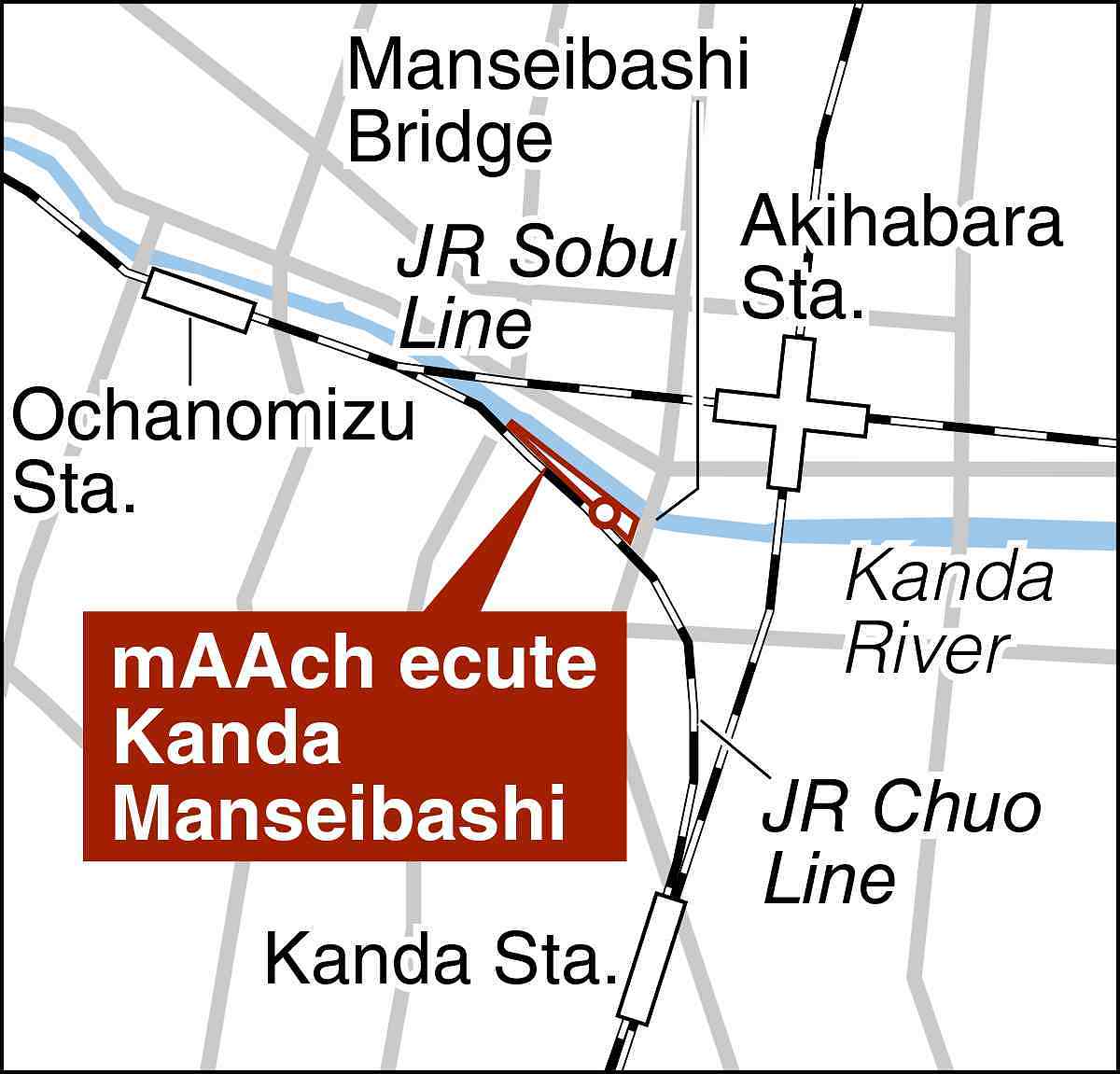
mAAch ecute Kanda Manseibashi
Address: 1-25-4 Kanda-Sudacho, Chiyoda Ward, Tokyo
Access: 4-minute walk from JR Akihabara Station, 6-minute walk from JR Kanda and Ochanomizu stations
Hours: The staircase and the observation deck are open Mondays through Saturdays from 11 a.m. to 10 p.m. They are open until 8:30 p.m. on Sundays and national holidays.
Related Tags
"Features" POPULAR ARTICLE
-

Sanrio to Open Museum in Yamanashi Pref. Dedicated to Founder, Exhibits Include Hello Kitty, Other Characters
-

Autumn Foliage Surrounds Visitors to Tokyo’s Showa Kinen Park
-

My Daughter No Longer Speaks to Me, But I Want to See Her and My Grandchild
-

Kumamoto: Public Bath Refurbished as Library Where You Can Chat, Take Photos
-

Frozen Vegetables: Demand Rises for Convenient, Tasty Domestic Produce
JN ACCESS RANKING
-

Keidanren Chairman Yoshinobu Tsutsui Visits Kashiwazaki-Kariwa Nuclear Power Plant; Inspects New Emergency Safety System
-

Tokyo Economic Security Forum to Hold Inaugural Meeting Amid Tense Global Environment
-

Imports of Rare Earths from China Facing Delays, May Be Caused by Deterioration of Japan-China Relations
-

University of Tokyo Professor Discusses Japanese Economic Security in Interview Ahead of Forum
-

Japan Pulls out of Vietnam Nuclear Project, Complicating Hanoi’s Power Plans

























